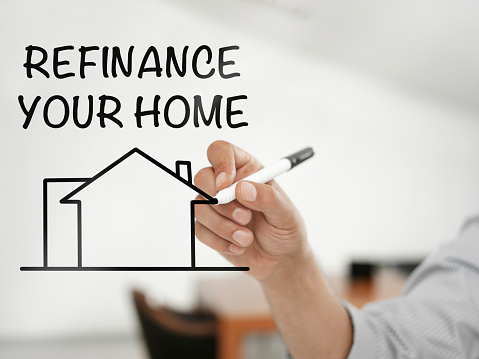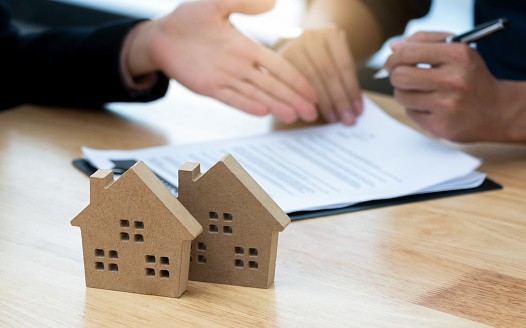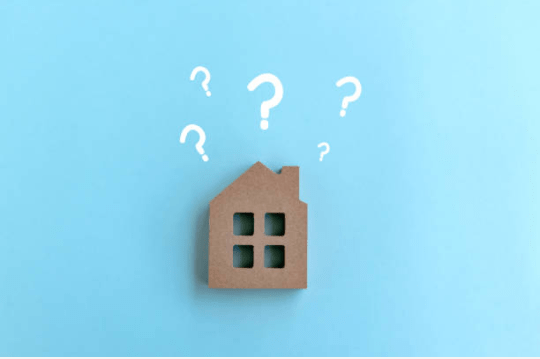With all the ads urging homeowners to refinance their homes, it makes people wonder if they should and how exactly would it benefit them. Refinancing your mortgage means that you are paying off the remainder of your existing loan and replacing it with a new one, or changing the terms of your existing mortgage. Any homeowner who currently has a mortgage and is seeking change is a great candidate for refinancing their mortgage. They could refinance and get a new kind of mortgage (i.e. longer-term) or they can adjust their mortgage so that it has better benefits for them. Find out if it makes sense to refinance by using our refinance mortgage calculator.
Common Reasons to Refinance
There are many reasons as to why homeowners refinance their homes such as:
- Taking advantage of a lower interest rate
- Lowering their monthly mortgage payment, shortening the term of their loan
- Cashing in on their mortgage to get a large amount of cash
Each of these reasons hold different benefits depending on the homeowner and their priorities, so continue reading if you want to see if you can reap the rewards of refinancing your mortgage.
You Want To Lower Your Interest Rate
One of the most common and best reasons to refinance is to lower the interest rate on your existing mortgage. The average homeowner could save up to $3,000 per year just by refinancing their mortgage. By reducing the interest rate, you can not only save a lot of money over the life of your loan, but you can pay down your principal faster. What many people do not realize is that with a 30-year fixed-rate mortgage, the payments during the initial period are mainly to pay off the interest.
Additional Benefits That Come With a Lower Interest Rate
With a lower interest rate, you can start paying off your principal sooner because if you have a lower interest rate, there is less interest to pay off. You do not have to wait until the market has lower interest rates in order to refinance and take advantage of a lower interest rate. You can also simply work on your credit score and wait for it to improve. With a higher credit score than the one you previously had when you signed your mortgage, you could qualify for a better rate than the one you currently have (assuming current rates are lower as well). Even though lowering the interest rate could get you a lower monthly mortgage payment, you can also lower your monthly payment by refinancing into a different mortgage.
You Want To Lower Your Monthly Payment Amount
If lowering your monthly mortgage payment is of the highest priority, one way of doing this is to refinance your existing loan for a different loan or refinance it for a term longer than what is left on your mortgage. Maybe you want to have disposable income or more breathing room for your finances every month, or maybe you want to improve your quality of life and have more money each month to experience new things and travel.
Refinancing Into a Longer-Term Mortgage
There are a multitude of reasons as to why people want to lower their monthly payment amount and sometimes predicting and waiting for the rates to fall can seem like an eternity, which can make it feel as if the solution is within your grasp, yet so far away. If you are currently in a 15-year mortgage, and you decide to refinance into a 30 year fixed, you will likely have a lower monthly payment. Similarly, if you are currently in a 30 year fixed rate mortgage and you have been consistently making payments for 10 years, by refinancing your current mortgage back into a 30 year fixed, you will now have lower monthly payments because your remaining balance is now divided by a higher number, which ultimately yields a lower payment; provided, however, that you will likely pay more interest over the life of the loan. Based on your financial needs, you should weight the pros and cons of a 15 vs 30 year mortgage.
Pay Off Your Home ASAP
If paying off your mortgage and getting out of debt as quickly as possible is your main reason for refinancing, then you can also accomplish this by refinancing into a mortgage with a shorter term. If you have recently found yourself finally getting that promotion and making more money than you did at the time you signed your mortgage and can now afford a higher monthly payment, refinancing into a 15 year fixed rate mortgage is a great idea.
Refinancing Into a Shorter Term Mortgage
By refinancing into a 15 year fixed loan term, you are not only going to finish paying off your home by paying off the principal at a much faster pace but you drastically shorten the term of your loan. You could also be getting a lower interest rate than your current interest rate. If you lower your interest rates, you are saving money overall during the life of your loan by paying less money in interest. While monthly payments might be higher with a shortened term, the total amount that you paid will be less with a lower rate. Although the monthly payments of a 15 year fixed home loan are higher in comparison to the monthly payments of a 30-year mortgage, you will have fully paid off your home in just 15 years and can now pocket the money that you would have been paying in mortgage payments for the next 15 years with the new loan.
Refinancing For Stability
While many homeowners refinance their mortgages in order to take advantage of a lower interest rate or to lower their monthly payment or reduce it to a shorter term, there are homeowners who will do the opposite. Homeowners who have an adjustable-rate mortgage (ARM) have refinanced into a fixed-rate mortgage and ended up getting a higher interest rate and a higher monthly payment, but received a sense of security. An ARM is a hybrid mortgage meaning that during the initial period of 5 years the interest rate is fixed, but once the initial period is over, the interest rate will adjust once a year according to the market. However, once this intro period ends, and interest rates are up from when they locked the loan previously, your monthly payment is likely to go up as well with the high interest. This is where refinancing into a fixed-rate mortgage makes a lot of sense.
Refinancing with No Closing Cost
Through evaluating your refinance options, you may hear about the no closing cost mortgage refinance programs, however, a more apt name is a no upfront cost refinance program given that third parties such as appraisers and notaries need to be paid somehow throughout the new mortgage approval process. The way that lenders provide a mortgage without upfront costs is to add all closing costs into your new loan balance, giving you a new mortgage that has a larger loan amount than the previous mortgage or charging a higher interest rate, which they use to pay closing costs via a lender credit. In the end, this type of mortgage refinancing may lead to a lower monthly payment but could end up costing a lot more for the life of the loan.
Cash-Out Refinance
Another way refinancing can be seen as an investment is through a cash-out refinance. With a cash-out refinance, you refinance your current loan for an amount more than what you currently owe and then you will take the difference in cash, taking the cash out of the equity in your home. With this large sum of cash, it is advised that it is to be used as an investment for a long term purpose. Examples include home improvements so that the home value is increased and paying off credit card debt to improve your credit score. You could even use it as a down payment for a second home to rent out to others and have another stream of income.
Additional Considerations Prior to Refinancing
- Refinance Terms
- You should understand the loan terms, amount, interest rate and total monthly principal, as well as the closing costs.
- Length of Stay
- If you are looking to save money by reducing your monthly payment, you should understand if the monthly savings can overcome all of the refinancing costs.
- Your financial situation in the long-term
- You may be able to take advantage of a lower interest rate or the ability to lower your monthly payment in the short term, but in the end, this could end up costing you in the long term as you are stretching out your loan payments to extend the life of the loan. For instance, a cash-out refinance can wipe out the equity you’ve built up in your home and extend the time you need to build your home equity back.
Be Mindful With Your Cash
Ultimately it is up to the homeowner how the money is spent, but keep in mind that the total amount included in those mortgage payments do have interest. Going on a shopping spree or taking a luxurious vacation isn’t the smartest way to make use of these funds. Before you take out a cash-out refinance, you want to make sure that there is a certain purpose for it and that the end result will financially benefit you in the end.
The Bottom Line
Refinancing your mortgage has many benefits that cater to many different needs and priorities. At the time of signing your mortgage, you might have had a different set of priorities and now the circumstances have changed. The great news is that you are not chained and expected to stand by your mortgage for the remainder of its term. With the option to refinance, homeowners have the opportunity to adjust their current mortgages to reflect on their current stage in life and the changes that came with it. If you are currently happy with your existing mortgage, you are more than welcome to continue paying it off. Just know that you are able to tweak it to better suit your needs. Whether your goal is to pay off your home as rapidly as you can, lower your monthly payment, invest in yourself, or have a sense of security, refinancing your mortgage could help you maximize your quality of life.




